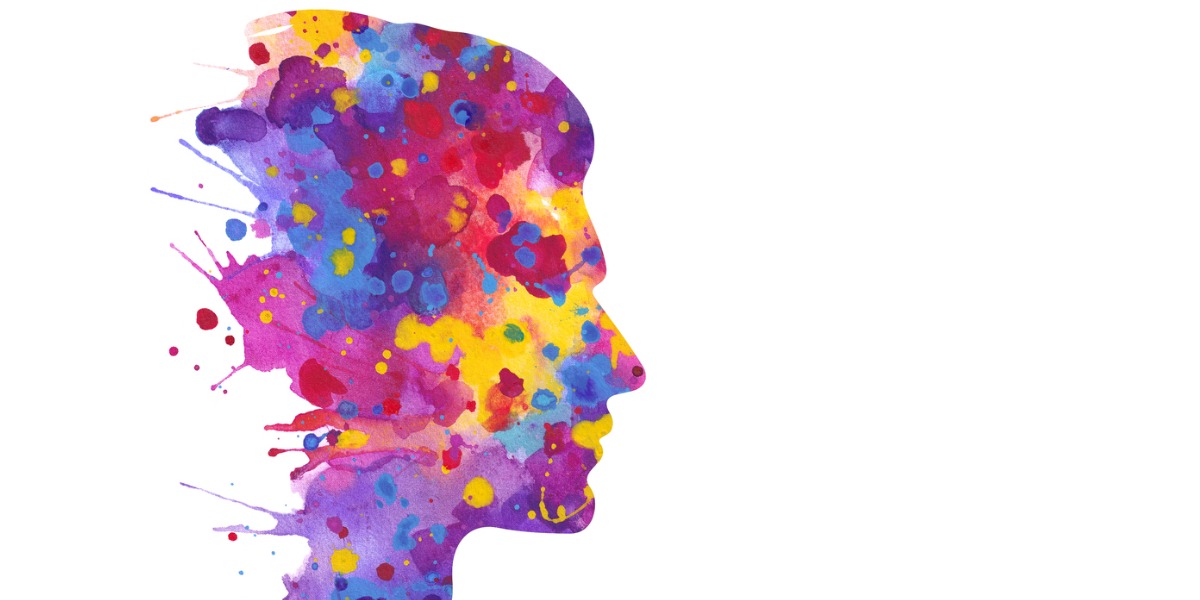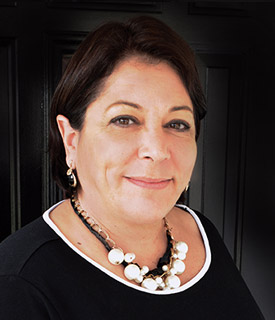Mental health treatment is changing rapidly: not long ago, the word psychedelic conjured images of the 1960s hippie movement, 1980s raves, and the dance party scenes or the 1990s/2000s – but now it’s just as common to hear the word psychedelic alongside the word psychotherapy as it is to find the word alongside phrases like “tune in, turn on, drop out.”
The paper “The Emerging Field of Psychedelic Psychotherapy” discusses the history of the use of psychedelics in the field of psychotherapy. This paper is important to our work even though we don’t use the medications the paper discusses. It reviews the history of psychedelics in mental health treatment, and explains how and why psychedelics are rapidly becoming an essential tool in our work to meet the increased demand of mental health treatment nationwide.
In treatment at Crownview Psychiatric Institute, we use two new medications connected to the early psychedelic therapy movement: Ketamine and Spravato®. To learn more about Ketamine and Spravato®, please navigate to the blog section of our website and read these this page:
Ketamine and Spravato®
While evidence shows various cultures have used psychedelics in spiritual, religious, and ceremonial practices for thousands of years, the contemporary use of psychedelics as therapeutics began in the mid- to late-20th century.
Consider this brief timeline:
Early Phase (50s and 60s)
- Patients across the country engaged psychedelic therapy with either psilocybin or LSD for various mental health disorders, including:
- Anxiety
- Depression
- Alcohol misuse
- Palliative, end-of-life care
- This phase reached its height of popularity in the early- and mid-1960s.
- Use of psychedelics in mental health treatment halted abruptly when the federal government classified psilocybin and LSD as controlled substances in 1970.
Second Phase (70s and 80s)
- A second-generation psychedelic, MDMA, gained traction for therapeutic purposes. It showed similar effects to the trials with psilocybin and LSD and the 60s.
- Like psilocybin and LSD, interest and studies on MDMA as a therapeutic when the federal government classified it as a controlled substance in 1985.
Third Phase (Early 2000s – Present Day)
- Studies targeting MDMA for treating post-traumatic stress disorder (PTSD) reported clinically significant reduction of symptoms
- Studies targeting psilocybin for treating depression and anxiety reported clinically significant reduction of symptoms
- In 2019, the Food and Drug Administration approved the use of Spravato® for depression and treatment-resistant depression
- The use of ketamine for treatment-resistant depression and other mental health disorders gained traction. Experts consider ketamine a safe, effective, off-label treatment for treatment-resistant depression
In treatment at Crownview Psychiatric Institute (CPI), we use Ketamine and Spravato®. To learn about how treatment with psychedelics works in our treatment plans, please scroll up, click the Ketamine and Spravato® link, and read about our protocols. When you read the protocols around psychedelic psychotherapy below, you’ll realize our treatment approaches are far simpler, and less time consuming. However, it’s important to understand the big picture with regards to psychedelic therapy, because these medications work differently than those associated with the take a pill and get cured paradigm that dominates the western medical approach to mental health treatment.
Before we discuss the original protocols for psychedelic psychotherapy, we’ll take a moment to review the need for a new approach to mental health treatment.
The Need for Psychedelic Psychotherapy
The most common application of psychedelic psychotherapy is to support people with mental health disorders such as depression and anxiety that don’t respond well – or at all – to first-line, traditional treatment with therapy + medication.
For depression, anxiety, and post-traumatic stress disorder, treatment-resistant means:
- A patient has attempted at least 2 traditional treatment protocols without success
- Previous protocols may have included medication only
- Previous protocols may have included medication and psychotherapy
- No previous protocols achieved satisfactory symptom reduction
Psychedelic therapy is gaining traction in mental health treatment because as rates of mental health disorder s like depression and anxiety increase, rates of people with treatment-resistant depression and anxiety increase, as well.
Please consider the latest data on mental illness in the U.S., as published in the 2021 National Survey on Drug Use and Health (2021 NSDUH).
Serious Mental Illness (SMI) Among Adults
- SMI by age:
- All adults: 14.1million
- Adults 18-25: 3.8 million
- Adults 26-49: 7.3 million
- Older adults 50+: 3.0 million
Now let’s look at the most recent information on depression among adults.
Severe Depression Among Adults
- Severe depression by age:
- All adults: 14.5 million
- Adults 18-25: 4.4 million
- Adults 26-49: 6.6 million
- Older adults 50+: 3.4 million
A study published in March 2021 called “The Prevalence and National Burden of Treatment-Resistant Depression and Major Depressive Disorder in the United States” revealed that among people with major depressive disorder (MDD), 31 percent of patients don’t respond to traditional, first-line treatment, and meet criteria for treatment-resistant depression (TRD).
That explains the need for new and innovative treatment protocols: the data tells us that millions of people in the U.S. have a type of depression that demands a fresh new perspective, and a commitment to the next generation of treatment – including psychedelic psychotherapy.
How Psychedelic Psychotherapy Works
Another disclaimer: the protocols we describe below are for two emerging types of psychedelic psychotherapy: psilocybin and MDMA. The FDA approved clinical trials for these medications in June, 2023. We share the protocols below for two reasons:
- They’re similar – but far more involved and clinician-intensive – to protocols involving ketamine and Spravato®, which we do use
- They demonstrate the power of the medications, and the importance of professional supervision and a tested, approved, and safe protocol
- They may soon become far more common.
If and when these medications become standard treatments for mental health disorders, anyone reading this article will be ahead of the curve and understand the basics already.
Now let’s take a look at the process, which typically happens in three phases: preparation, dosing, and integration.
Phase One: The Preparation Phase
This phase is similar to most forms of psychotherapy:
- The therapist and patient meet for an initial evaluation/assessment. If the therapist determines the patient is a good fit for psychedelic psychotherapy, they then collect any relevant demographic and medical information from the patient
The preparation phase now focuses on psychedelics:
- Therapist and patient take time to discontinue any current treatment protocol contraindicated for psychedelic psychotherapy
- Therapist and patient prepare for the psychedelic treatment experience. These sessions typically prioritize:
- Preparing the patient for the upcoming experience
- Setting realistic expectations
- Forming treatment goals
- Preparing for any challenges that may occur during a session
- The final prep session most often happens the day before the first dose of psychedelic medication
Phase Two: The Dosing and Integration Phase
This phase spans all three phases of treatment.
- During the final preparation session, the therapist makes sure the patient is ready for the psychedelic experience
- Treatment sessions have different durations, depending on the medication:
- Psilocybin: 1-6 hours
- MDMA: 1-8 hours
- All patients must arrange transportation home from psychedelic therapy sessions
- Most treatment sessions include two licensed clinicians: a lead clinician and a support clinician
- The experience is different for each patient. Factors include dosage, therapist, and anything specific to patient needs
- Clinicians closely monitor the emotional, psychological, and physical wellbeing of patients throughout the treatment session.
Phase Three: The Integration Phase
- The initial integration session typically occurs the day after the first dosing session
- If dosing happens once a week for three weeks, integration follows the same pattern, with integration sessions scheduled the day after dosing sessions
- Goals of the integration phase include:
- Discussing the dosing experience
- Comparing expectations to the actual experience
- Identifying, clarifying, and understanding the insights associated with the dosing experience
- Consolidating the experiencing, and preparing to apply the lessons to the management of mental health symptoms
- Integration is both patient-centered and patient-driven. Therapists help patient understand the insight gained during the dosing experience, and helps patients use the insight in a way that works and makes sense for them.
That’s basically how psychedelic psychotherapy works. With some variation, it follows this pattern:
- Preparation
- Dosing
- Integration
All protocols ensure the emotional, psychological, and physical safety of patients, first and foremost. They also involve dosing monitored professional mental health providers, and integration therapy that ensures patients can apply the experiences and insights of the dosing sessions to symptoms management in daily life.
Advantages of Psychedelics: Quick and Long-Lasting Relief
Let’s recap.
- Millions of people in the U.S. have mental illness – with numbers increasing every year.
- Roughly 1/3rd of people with mental illness don’t respond well to the most common, first-line treatments
- Psychedelic therapy is a promising option for people with treatment-resistant mental illness
Those are three main drivers of the renewed focus on psychedelic psychotherapy in mental health treatment. Now let’s recap the benefits.
Benefits of Psychedelic Psychotherapy
- Effective for treatment-resistant mental illness
- Quick relief from disruptive symptoms
- Long lasting relief from disruptive symptoms
Reminder: this article discusses treatment with MDMA and psilocybin, but the benefits we list above also apply to the psychedelic therapeutics we use at Crownview Psychiatric Institute:
- Spravato®, in the form of a nasal spray with the medication esketamine
- IV ketamine, in the form of intravenous infusion
- Oral ketamine, in the form of liquid esketamine
Currently, Spravato® is approved by the FDA for the treatment of various disorders, including major depressive disorder (MDD), treatment-resistant depression, anxious depression, and depression with suicidal thoughts. The FDA allows off-label use of ketamine for treatment resistant-depression, major depressive disorder, bipolar disorder, anxiety disorders, and post-traumatic stress disorder.
The other two psychedelics we discuss in this article – MDMA and psilocybin – are currently in the FDA-approved trial phase. If and when these medications gain approval, we’ll share the information as soon as possible.


 Gianna Melendez
Gianna Melendez Jodie Dahl, CpHT
Jodie Dahl, CpHT